Meat ragù, also known as Bolognese sauce, is one of the most renowned condiments not only in Italy but around the world.
Il ragù di carne, noto anche come sugo alla bolognese, rappresenta uno dei condimenti più celebri non solo in Italia, ma in tutto il mondo.
Ragù typically consists of a tomato sauce and ground meat, slow-cooked with flavours that vary depending on the Italian region in which it is prepared.
Il ragù di solito consiste in una salsa di pomodoro e carne macinata, cotta lentamente con aromi che variano a seconda della regione italiana in cui viene preparato.
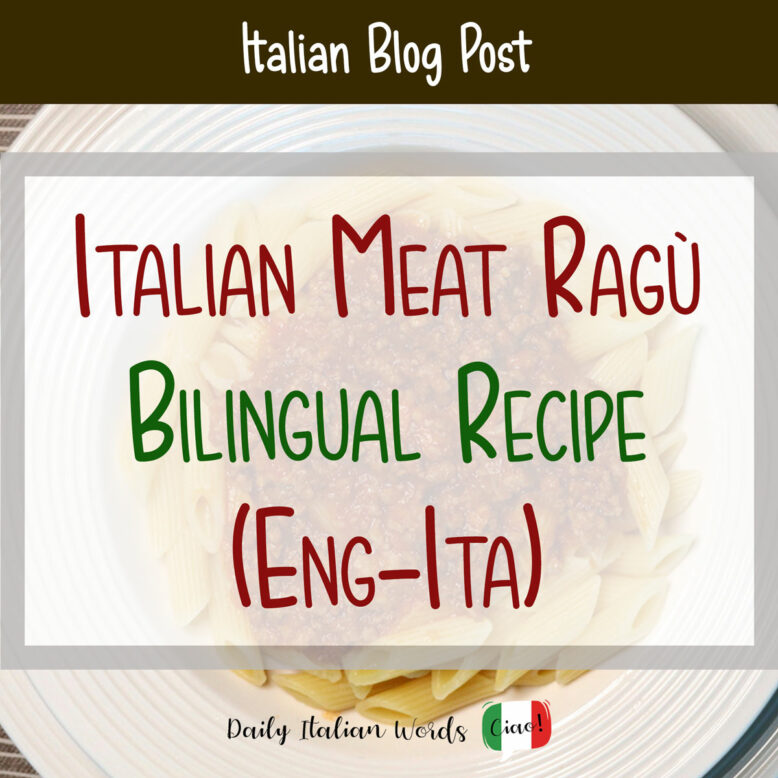
The various kinds of ragù
Le varie tipologie di ragù
The most renowned ragùs in Italy are Bolognese ragù and Neapolitan ragù.
I ragù più rinomati in Italia sono il ragù bolognese e il ragù napoletano.
The difference between Bolognese ragù and Neapolitan ragù lies in the treatment of the meat.
La distinzione tra il ragù bolognese e quello napoletano risiede nel trattamento della carne.
Bolognese ragù uses minced beef and pork, with a “soffritto” of finely chopped vegetables such as celery, carrot, and onion. It is primarily intended as a sauce for fresh or dried pasta but also pairs well with polenta.
Il ragù bolognese fa uso di carne macinata di manzo e maiale, con un soffritto di verdure finemente tagliate, come sedano, carota e cipolla. È principalmente concepito come condimento per la pasta fresca o secca, ma si adatta bene anche alla polenta.
On the other hand, Neapolitan ragù uses pieces of non-minced beef and pork, basil, abundant tomato sauce, and onion. The sauce is so rich that, besides being a pasta condiment, it can be considered a standalone dish and requires slow cooking for about four hours.
Il ragù napoletano, invece, impiega pezzi di carne bovina e suina non macinata, basilico, abbondante sugo di pomodoro e cipolla. Il sugo è così ricco che, oltre ad essere un condimento per la pasta, può essere considerato come un piatto autonomo e richiede una cottura lenta di circa quattro ore.
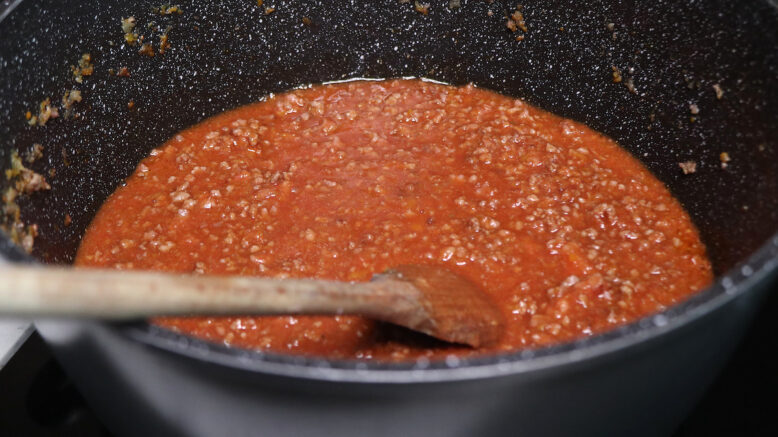
The origin of ragù
L’origine del ragù
The origin of the word has roots in the French “ragout,” a noun derived from the verb “ragouter” (with a circumflex accent on the “u”), meaning to stimulate the appetite.
L’origine della parola ha radici nel francese “ragout”, un sostantivo derivato dal verbo “ragoûter”, che significa ravvivare l’appetito.
In Italy, ragù has evolved into the traditional pasta sauce for festive occasions, solidifying its position as the quintessential festive dish.
In Italia, il ragù è diventato il condimento tradizionale per la pasta durante le occasioni festive, diventando in particolare il piatto festivo per eccellenza.
The ingredients and measurements
Gli ingredienti e le dosi
- 700 grams of minced beef
- 300 grams of minced pork (both meats should have some fat content)
- 900 ml of tomato puree
- 150 grams of minced pancetta
- 2 tablespoons of tomato paste
- Onion, celery, and carrot for the “soffritto” (sautéed vegetables)
- 5/6 tablespoons of extra virgin olive oil (EVO)
- 100 ml of wine (red or white)
- 60 ml of milk
- Pepper
- Nutmeg, if desired
- 700 grammi di carne di manzo macinata
- 300 grammi di carne di maiale macinata (entrambe le carni dovrebbero contenere un po’ di grasso)
- 900 ml di passata di pomodoro
- 150 grammi di pancetta macinata
- 2 cucchiai di concentrato di pomodoro
- Cipolla, sedano e carota per il soffritto
- 5/6 cucchiai di olio extra vergine di oliva (EVO)
- 100 ml di vino (rosso o bianco)
- 60 ml di latte
- Pepe
- Noce moscata, se desiderato
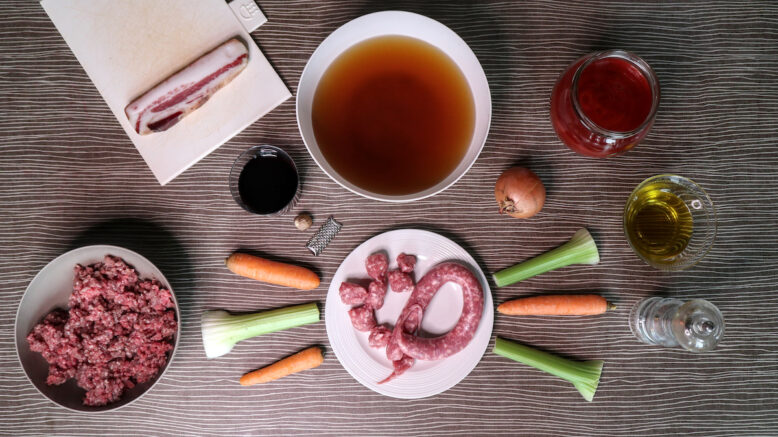

How to make the ragù
L’esecuzione
Prepare the “soffritto” with carrot, celery, and onion: wash and cut the vegetables into small pieces, then chop them with a mixer.
Preparare il soffritto con carota, sedano e cipolla: lavare e tagliare le verdure in piccoli pezzi, quindi tritarle con un mixer.
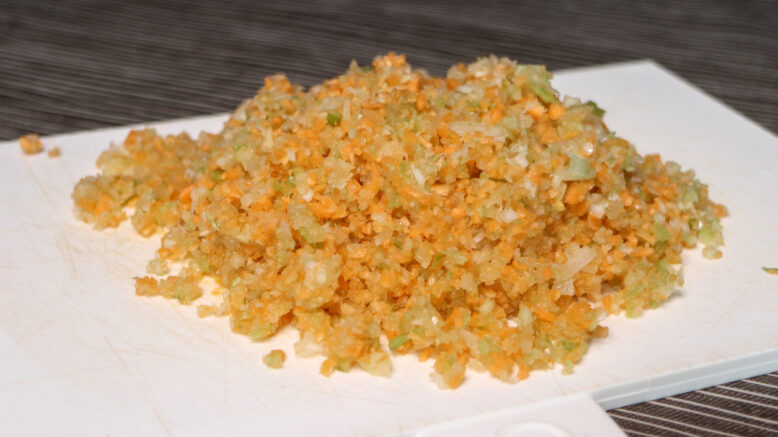
Sauté the soffritto over medium heat in a pot with oil and a tablespoon of water for about 5 minutes.
Rosolare il soffritto a fuoco medio in una pentola con olio e un cucchiaio d’acqua per circa 5 minuti.

Add the meat and sauté it for about 10 minutes.
Aggiungere le carni e rosolarle per circa 10 minuti.

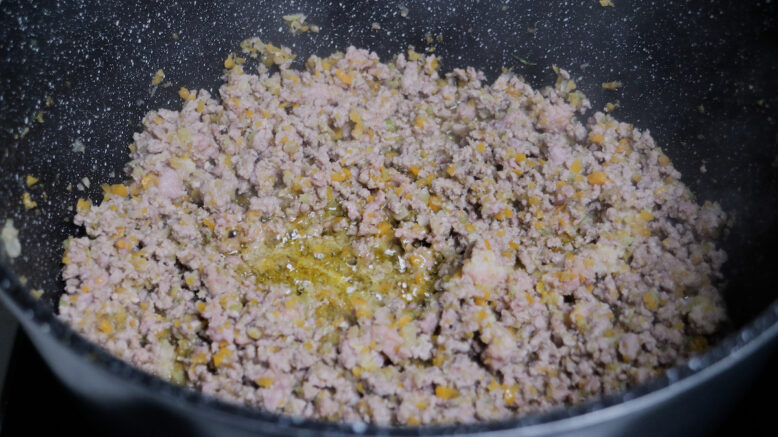
When the meat changes colour, deglaze with the wine.
Quando la carne cambia colore, sfumare con il vino.
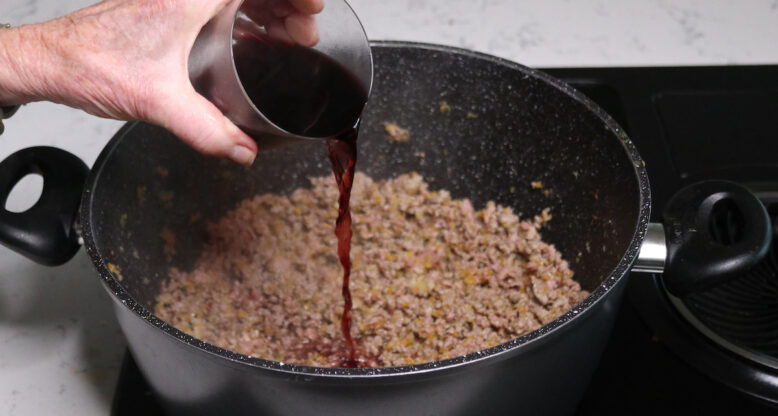
Pour in the tomato puree.
Versare la passata di pomodoro.
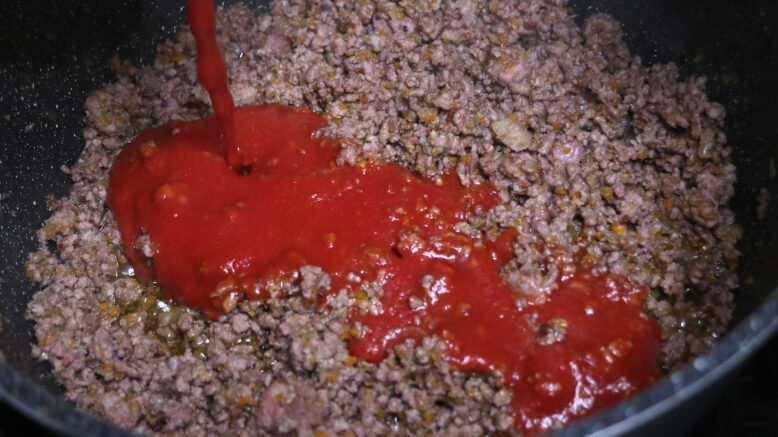
Fill the empty tomato puree bottle completely with water and pour half of it into the pot with the sauce and meat. Cook over low heat for about 2 hours, gradually adding the remaining water from the bottle.
Riempire completamente la bottiglia della passata con acqua e versarne metà nella pentola con la salsa e la carne. Cuocere a fuoco basso per circa 2 ore, aggiungendo gradualmente il resto dell’acqua dalla bottiglia.
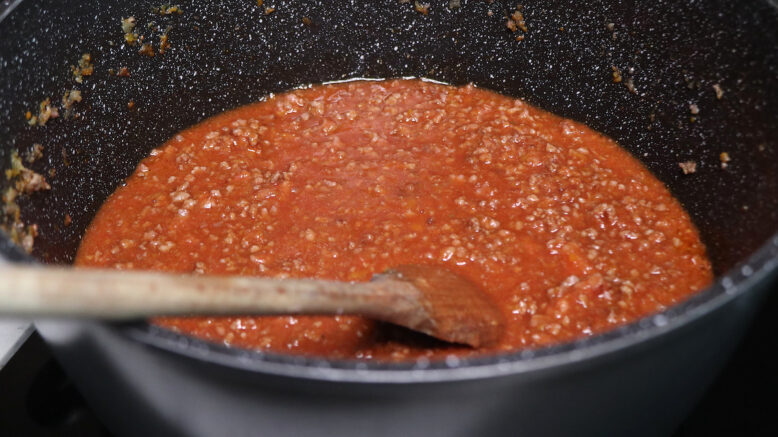
When it has finished cooking, finish with milk and, if desired, add pepper and nutmeg.
Alla fine della cottura, completare con il latte e, se desiderato, pepe e noce moscata.
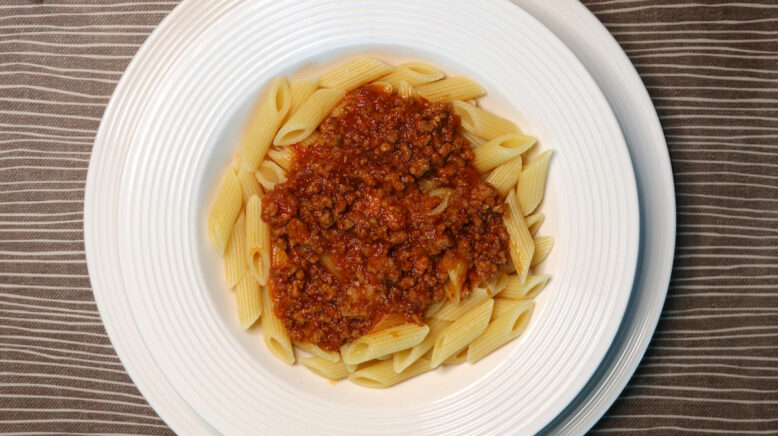
BUON APPETITO!
Allegra Lucarelli, known professionally as allegraLu, is a certified Neurolanguage Coach for child bilingualism and a native Italian speaker who speaks English fluently. She helps families raise their children to be bilingual and multilingual at AllegraLu.com.


